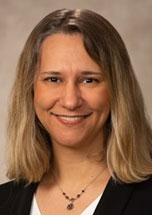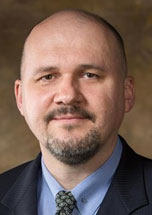
When two companies decide to merge, it’s usually a high-stakes decision involving millions–or even billions–of dollars. On paper, it all boils down to strategy and cold, hard numbers. Advisors and leaders pore over projections and integration plans, looking at ever possible risk and reward. But what if the outcome of the deal wasn’t just dependent on strategic alignment or financial spreadsheets? In a world where networking is key, the old saying “it’s not what you know, but who you know” might have more truth to it than we think.
University of Arkansas professors Dobrina Jandik and Tomas Jandik and Zayed University’s Rwan El-Khatib a Walton PhD alumna, explore this idea in their latest study, “Does social network connectedness affect acquirer merger performance around the world?” Their findings offer a fresh look at how social relationships can quietly influence high-level business deals and why that influence is stronger in some places than others.
A Global Look at Familiar Faces
This isn’t the first time Jandik and Jandik have examined how personal ties can shape M&A outcomes. In their previous work, they revealed that personal relationships between a company’s leaderships and its financial advisors can actually hurt overall company performance. Their U.S.-focused research shows how these connections can often lead to inflated advisor fees, longer deal completion, and reduced shareholder returns.
But what happens if you expand the lens past just the U.S.? This new research shifts the focus to a global view and explores how networks and social connections affect acquirer performance across different countries and find that the dynamics are very different. Outside the U.S., CEOs often have much smaller, local networks with varying cultural and corporate governance contexts. These differences all have different effects and can significantly influence whether personal relationships act as a risky liability or strategic asset in deal making.
Social Ties Behind Boardroom Doors
Imagine Company 1 wants to buy Company 2. At face value, this decision may seem purely strategic or as if things just aligned perfectly at the right time. However, behind the scenes Sarah, a director from Company 1 might sit on the board of Company 2 alongside Dean, a director from Company 2. Sarah and Dean’s personal connection and shared history give each party an insider’s look at how the companies work as well as create a level of trust that allows the merger to be conducted more smoothly.
This research refers to these types of boardroom overlaps as “bilateral ties” and these ties often aren’t just coincidental but instead are strategic and powerful tools for M&A deals. In mergers where a board member serves both the acquiring and target companies, the researchers found almost 2% higher returns to the acquiring firm’s shareholders. Though at first glance that may not seem like much, in a multi-billion dollar acquisition, that 2% is worth millions of dollars in extra value.
The reason for this increase is pinpointed in the research, as “Bilateral ties among business decision makers facilitate the transfer of information, decrease the cost of counterparty screening and monitoring, and enable transactions based on mutual trust.” In short, these ties streamline all of the processes that are needed to make sure the leaders at the merging companies will be able to collaborate. They know how the other company works and what type of person they are, making it easier to trust the other company and thus allowing for faster, more confident decisions.
The CEO's Rolodex: More Than Just a Card Collector
Additionally, the study also examined effects of the broader social networks of CEOs, not just the bilateral ties, but how well-connected they are in general or “network centrality.” Researchers found that in non-U.S. countries, companies whose CEOs had a larger network centrality averaged 1.25% higher abnormal returns on average for their acquiring firms. This finding is particularly interesting because these results are the opposite of what U.S. focused studies show. Typically, a CEO with too many connections might become overly confident or insulated, which leads CEOs to prioritize maintaining their position or influence over the company above their making the best strategic decision.
So why are the results outside of the U.S. so different? This research suggests that it is about the balance of power. In the U.S., being a successful businessperson is largely about networking, who you know, and maybe having an obscene number of connections on LinkedIn. In other countries, this is not always the case, as CEOs outside of the U.S. are less socially central in general. This means that a CEO with higher network centrality can be a competitive advantage that brings in valuable insights and access without falling into the trap of entrenchment or egotistical, self-preserving decisions.
When Institutions Make Social Networks Work Smarter
There is yet another twist to this research. While social connections are shown to be useful in M&A deals, the benefits of these social connections are also dependent on the strength of a country’s formal financial institutions. In places with strong auditing and reporting standards, this means that personal connections become even more valuable. Why? Because having transparent and public information helps indicate what is happening behind closed doors and spreadsheets.
This research also found that the same pattern holds true for takeover markets. In countries with efficient and transparent systems for mergers and acquisitions, where deals are easier to execute and less likely to be blocked, the gains from social ties and CEO networks are more pronounced. This brings one to a simple conclusion: when formal institutions are solid and records are well-kept and transparent, informal institutions such as relationships are allowed to flourish even further.
 Kaslyn Tidmore is a second-year graduate student at the University of Arkansas, earning
her master’s degree in public relations and advertising. Before relocating to Arkansas,
Kaslyn graduated from the University of Oklahoma with a bachelor’s degree in print
journalism and a minor in editing and publishing. During this time, she interned with
publications such as, Parker County Today Magazine, WedLinkMedia, Modern Luxury, and
the school’s newspaper, the OU Daily. Following her role as the graduate assistant
to Editor-in-Chief Ryan Sheets, Kaslyn now serves as a GA in the Center for Media
Ethics and Literacy at the School of Journalism and Strategic Media.
Kaslyn Tidmore is a second-year graduate student at the University of Arkansas, earning
her master’s degree in public relations and advertising. Before relocating to Arkansas,
Kaslyn graduated from the University of Oklahoma with a bachelor’s degree in print
journalism and a minor in editing and publishing. During this time, she interned with
publications such as, Parker County Today Magazine, WedLinkMedia, Modern Luxury, and
the school’s newspaper, the OU Daily. Following her role as the graduate assistant
to Editor-in-Chief Ryan Sheets, Kaslyn now serves as a GA in the Center for Media
Ethics and Literacy at the School of Journalism and Strategic Media.





